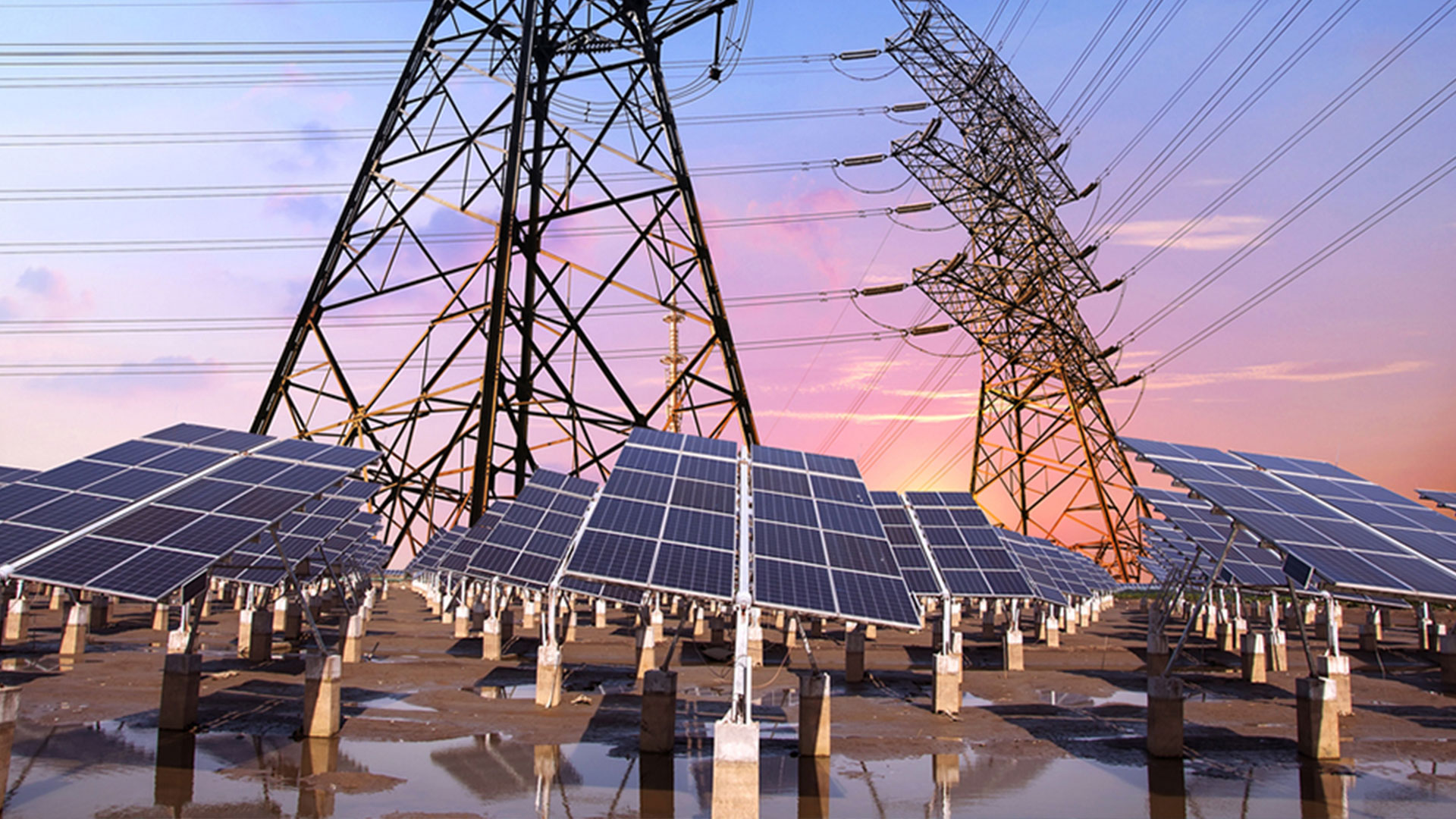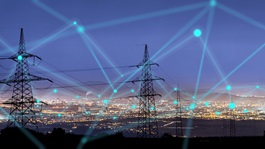
Publication
ESG and internal investigations: New compliance challenges
As ESG concerns have come to the forefront in different jurisdictions, the scope of these inquiries is expanding in kind.


United Kingdom | Publication | marzo 2022
Supply-chain issues and rising costs present short-term difficulties for sector poised for rapid growth
The US renewable energy market is entering a period of potentially rapid growth, but with a great deal of short-term uncertainty. The sources of uncertainty include supply-chain difficulties, a potential rewrite of US tax incentives for clean energy, inflation, import tariffs and domestic and international political tensions.
The following are excerpts from a panel discussion held at the Cleanpower 2021 convention in early December about the current state of the market.
The panellists were Jordan Newman, managing director with financial services firm Wells Fargo, Steve Schauer, managing director with US investment bank Keybanc Capital Markets, Mark Williams, managing director with US-based PNC Bank, and Dave James, managing director with US-based Cobank. The moderator is Keith Martin with Norton Rose Fulbright in Washington.
Martin: How are supply-chain difficulties affecting transactions?
Newman: We have had to extend commitments a number of times for a number of different deals this year as projects were running up against power-purchase agreement (PPA) deadlines or up against construction debt deadlines. We are probably looking at 20pc of the volume that we might have expected to do in 2021 slipping into 2022. We are also seeing deals on which we are working toward funding commitments in 2022 already being pushed into 2023 because of supply-chain issues.
Martin: Slipping into 2023, not 2022?
Newman: Correct. They would have been 2022 deals, but it is already clear that delays will push them into 2023.
Martin: So, the supply-chain issues are not a short-term problem that will work itself out by next summer?
Newman: It certainly does not seem that way from where I sit.
Martin: Some solar developers have told us that as many as 30pc of PPAs for solar projects still in development have been cancelled because the developers are no longer able to deliver the electricity for the original prices offered. Supply-chain difficulties and inflation are driving up project costs. Have you seen this?
Schauer: What we see, particularly in solar, is that PPA prices have gotten so low that there is usually very little room for back leverage. Most of the back leverage and debt financing in general is in smaller-scale solar.
Martin: Steve Schauer, where are interest rate spreads currently in the debt market?
Schauer: We are seeing interest rates on back-levered term debt in solar projects that are down the middle of the fairway in terms of risk at 125 or maybe 137.5 basis points (bps) above London Inter-Bank Offered Rate (Libor).
For Secured Overnight Financing Rate (SOFR) you would add another 12.5bps. SOFR spreads have not been worked out yet. SOFR is more trouble to swap because the full range of debt tenors is not available yet.
Martin: Interest rates basically have not moved in the past year. I was looking at a loan agreement yesterday in which the SOFR spread is 100bps higher than the Libor spread. Why?
Schauer: We are not charging anywhere near 100bps more.
Martin: Is it because SOFR is a more volatile metric?
Williams: It an inherently risk-free type rate. It does not build in a credit risk, so you have to build in a margin above SOFR, and the market has not really settled on what that is. There have been suggestions for three-month SOFR that it is around 25bps or 26bps, but my observations are—and these are my observations, not necessarily PNC Bank’s opinion—that there are a lot of administrative, logistical and regulatory issues that need to be worked out before we have smooth sailing in terms of the Libor transition.
Martin: US Customs is blocking a lot of solar panels. One Chinese vendor told us as many as 80pc of Chinese-branded equipment is not getting into the US. How is this risk being handled in financing?
James: If the panels are not already in the US, then the related construction funds will not be released. You might be mid-construction and US Customs holds up a shipment of panels, and you have a problem at that point. Lenders will take a hard look at whether to continue to fund. They will want a sponsor guarantee in some cases to ensure repayment.
Martin: How does 2022 look in terms of deal volume?
Schauer: This past year was very strong. We expect 2022 will remain strong. You have a whole series of wind projects that were built in the 2009 through 2012 timeframe that are ready for repowering. Solar kicked in two or three years later, so we see a lot of potential repowering in solar as well.
Martin: Casualty insurance premiums have gone up four and five times for solar projects. We have seen sponsors send notices to bankers and tax equity investors in deals that have already been financed that they cannot find casualty insurance at affordable premiums. What happens in that case?
James: You still need casualty insurance. The higher cost will reduce the amount of debt the project can support.
Martin: What if the project has already been financed?
Williams: Most lenders and tax equity investors are loathe to go for an extended period without insurance. We have seen sponsors ask to have increased deductibles that go above and beyond what was in the documents. So far, things have been working out. Projects eventually find insurance.
Martin: Are you seeing other effects from climate change?
Newman: It certainly seems like 1-in-500-year events are happening more than every 500 years. In addition to affecting insurance, it feels like there is more uncertainty around electricity output. For example, the wildfires in California put smoke in the air that reduced the output from solar modules.
Martin: Output forecasts have been less reliable in certain parts of the country.
James: The science of estimating solar resources is advancing, especially after we have seen industry-wide that solar output has been maybe 6pc on average below forecasts. Those types of revelations help the market become more efficient.
Martin: Are there other, new risks that have shown up in the renewable energy market this past year?
Newman: The cashflows that we are being asked to underwrite have been substantially more volatile and less predictable. You might have a project that has three different offtake arrangements that maybe only cover 80pc of the capacity. All three of them are settled at a hub, so there is electricity basis risk and a merchant component, and there might be some kind of floor or upside sharing. There is a mix of different types of offtakers with different credit profiles.
Williams: The new risk is the cumulative impact of all the factors we discussed. We have not had this level of uncertainty in terms of tax law, in terms of inflation, in terms of supply-chain difficulties and labour shortages, in terms of pricing, and all of that has contributed to a reluctance on the part of sponsors to lock in long-term offtake contracts because they think prices may be higher in a few months. There is an unusually large number of moving parts.

Publication
As ESG concerns have come to the forefront in different jurisdictions, the scope of these inquiries is expanding in kind.

Publication
The “First Ready, First Connected” reforms proposed by the Electricity System Operator (ESO), and which could be in place by the end of Q2 2025, aim to address existing issues with the application process for connections to the GB electricity grid.
Subscribe and stay up to date with the latest legal news, information and events . . .
© Norton Rose Fulbright LLP 2025